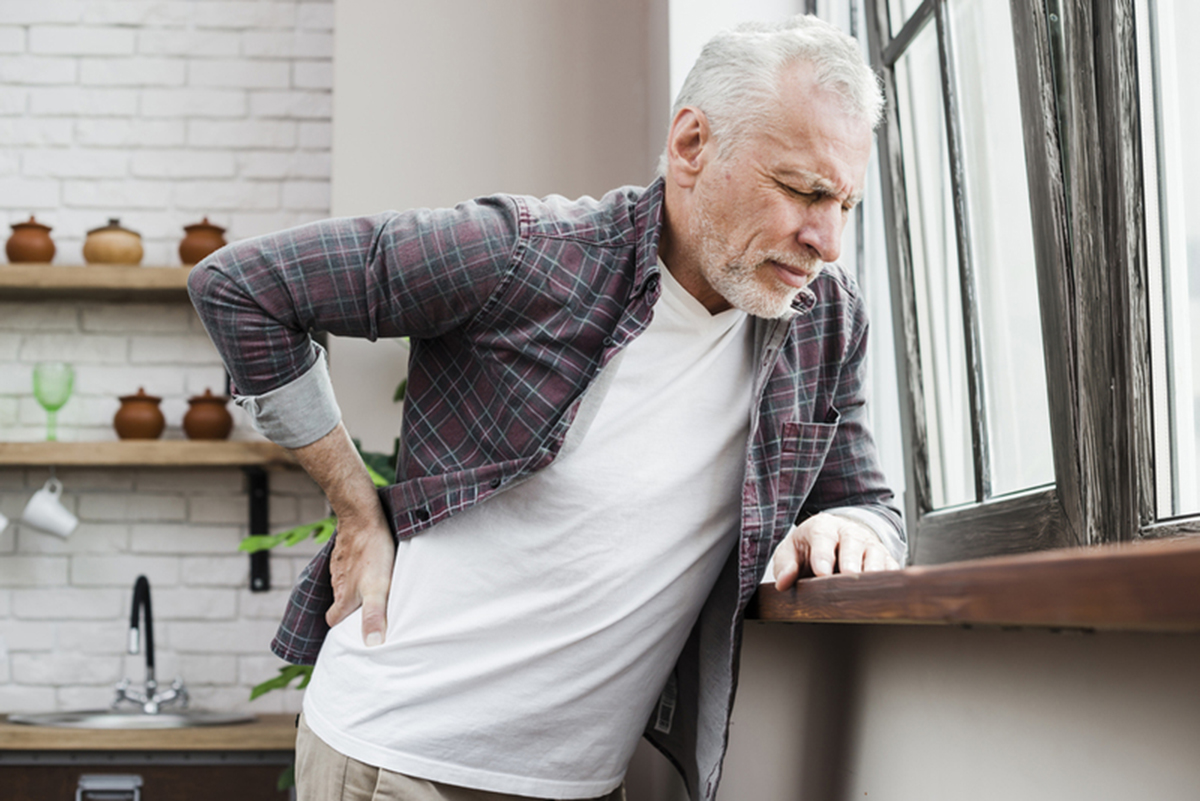Arthritis is a chronic illness that is classically characterized by joint inflammation, stiffness and pain. Arthritis can develop in patients of any age, from children (who develop a subtype known as juvenile idiopathic arthritis) all the way to the elderly. No matter what age you are when you develop arthritis, it can be debilitating.
While it can develop in patients of any age, arthritis is most common in the elderly population. In fact, almost 50 percent of people aged 65 years or older have some type of arthritic pain. Therefore, while most people won’t develop arthritis, significant proportion of people will.

Symptoms of arthritis in the elderly
Unfortunately, you can never predict who and when someone will develop the disease. It can strike anyone at any time. These are the signs of arthritis you should watch for if you are an elderly person:
- Stiffness of joints, especially in the morning
- Pain in joints
- Joints that are swollen, and are tender to touch
- Problems moving a joint
- Warmth around a joint
- In some cases, a fever
Subtypes of arthritis in the elderly
There are several different subtypes of arthritis. In fact, arthritis has more than a 100 individual subtypes, some of which are more common in people of a specific age group than others. Studies have shown that elderly patients are most likely to develop either osteoarthritis, rheumatoid arthritis or gout. Here is more information about the subtypes of arthritis that are most common in elderly patients:
Osteoarthritis
This is also known as "wear-and-tear" disease and is the most common type of arthritis in elderly people. Osteoarthritis develops because the cartilage (the soft cushioning that lines the joints) starts to wear away due to overuse of a specific joint. Since cartilage protects the bones from touching each other, the wearing down and deterioration of cartilage causes pain in the joints. This pain can affect several different aspects of your life including walking, working and sleeping. Most commonly, osteoarthritis affects joints in the hands, neck, lower-back, knees and hips. This is a classic subtype of arthritis that develops due to age and overuse of joints and can affect anyone.
Treatment for osteoarthritis includes:
- Pain relievers that are bought over-the-counter such as acetaminophen.
- If the pain is not resolved with over the counter pain relievers, then your doctor may prescribe you stronger pain relievers.
- Corticosteroid injections that go straight in the joints, can help relieve pain
- In extreme cases, your doctor may ask you to undergo surgery
Rheumatoid Arthritis
Rheumatoid arthritis is another common subtype of arthritis, though not as common as osteoarthritis. Rheumatoid arthritis is much more common in women than men. Rheumatoid arthritis is an autoimmune disease, which means that it develops because our immune system is impaired and starts to attack our own healthy tissue instead of foreign particles. In this case of rheumatoid arthritis, the immune system starts to attack the lining of the joints, leading to severe pain and swelling. Flare-ups for rheumatoid arthritis can last for hours and can be extremely painful, to the point whether patients may not even able to move their joints.
The joints most commonly affected by rheumatoid arthritis are:
- Fingers
- Wrists
- Elbows
- Hips
- Ankles
- Neck
- Feet
- Knees
Unfortunately, in some cases, rheumatoid arthritis goes beyond the joints and can also start to attack a patient’s heart, kidneys and nervous system. Treatments for rheumatoid arthritis includes:
- Over the counter pain relievers and anti-inflammatory medication (such as ibuprofen)
- Disease modifying anti-rheumatic drugs (DMARDs), which are prescribed by the doctor
Gout
Gout is another type of arthritis that can occur in elderly patients. It is a painful type of arthritis which develops because uric acid crystal form in the joint spaces, leading to pain and inflammation in the joint. These are the risk factors for developing gout:
- Being overweight
- Drinking large amounts of alcohol
- Taking certain medication such as blood pressure medications
Gout can develop in the joints of these regions:
- Big toe
- Ankle
- Knee
- Wrist
- Hand
The treatment for gout includes:
- Corticosteroids to reduce swelling
- Over-the-counter pain relievers
- Avoidance of foods that trigger gout
Other treatments for all types of arthritis
In addition to the medication that is prescribed by your doctor, other treatments that have been found to be beneficial for patients with arthritis include doing daily exercise (such as walking or swimming), strengthening exercises as building muscle around the arthritic joints helps support the joints and reduces pain, and range-of-motion exercises as these can help improve flexibility of your affected joint.
Conclusion
If you find yourself experiencing significant pain in your joints that lasts more than week, be sure to make appointment with your doctor right away so that you can start treatment early on. With the right treatment, you can live a healthy and fulfilling life with arthritis.
- Star, Vicki L., et al. "Validity of self-reported rheumatoid arthritis in elderly women." The Journal of rheumatology 23.11 (1996): 1862-1865.
- Sharma, M. K., et al. "An epidemiological study of correlates of osteo-arthritis in geriatric population of UT Chandigarh." Indian journal of community medicine 32.1 (2007): 77.
- van Schaardenburg, Dirkjan, and Ferdinand C. Breedveld. "Elderly-onset rheumatoid arthritis." Seminars in arthritis and rheumatism. Vol. 23. No. 6. WB Saunders, 1994.
- Photo courtesy of SteadyHealth


Your thoughts on this